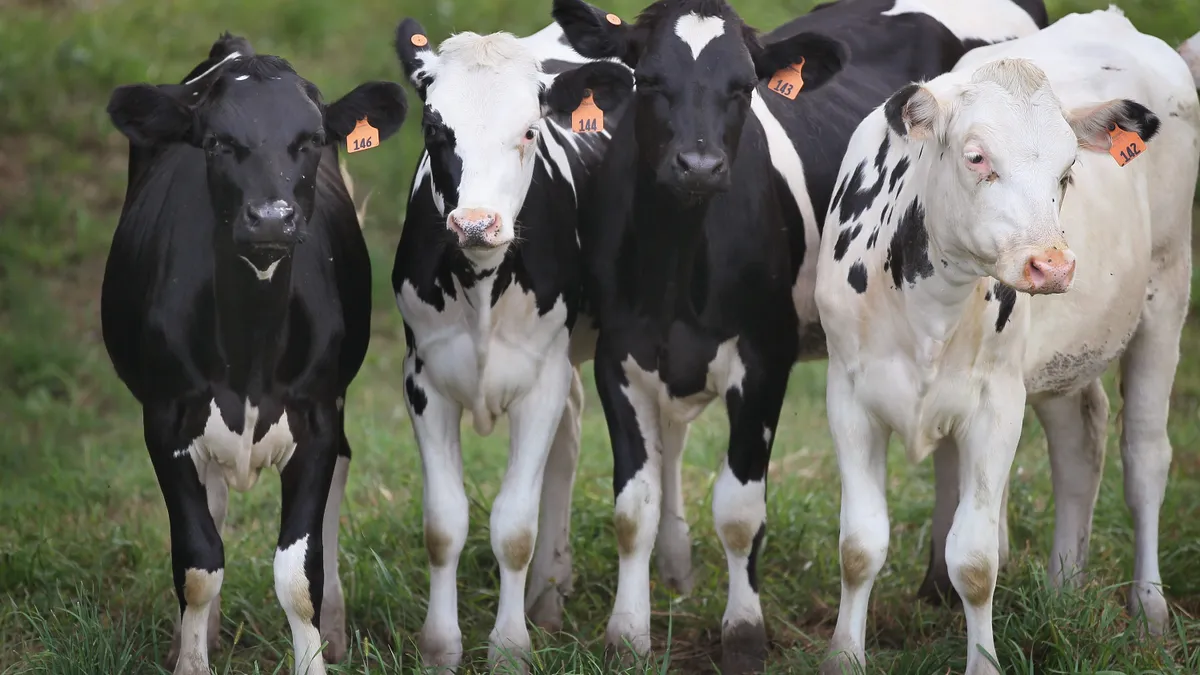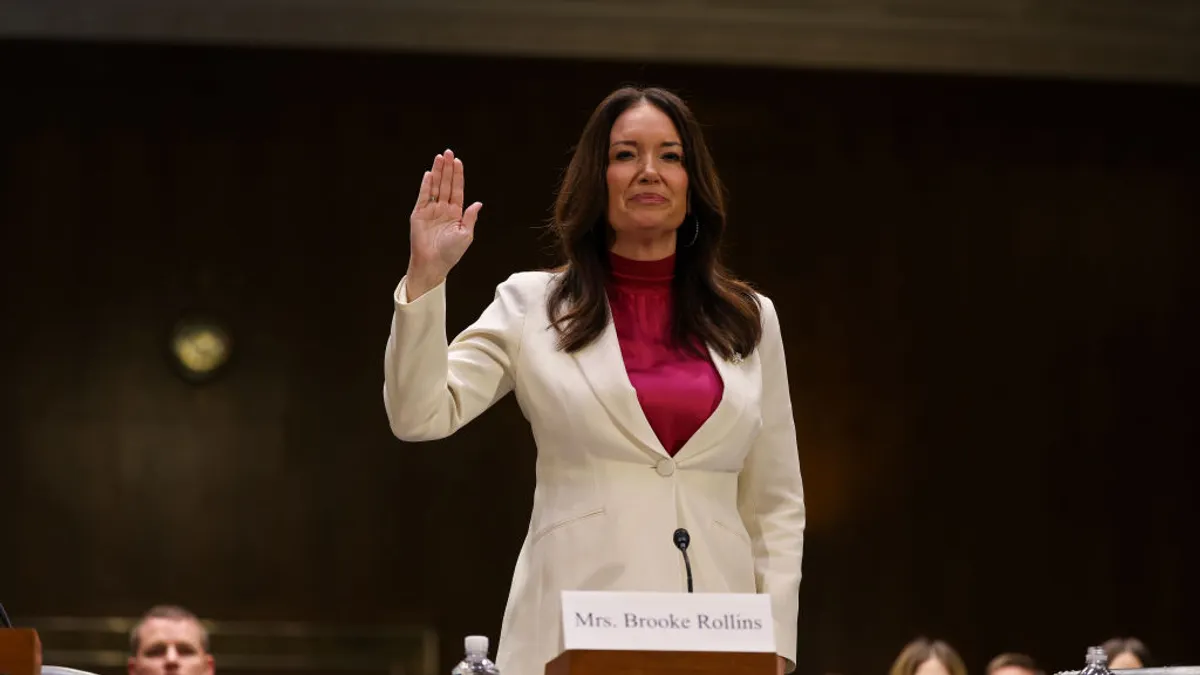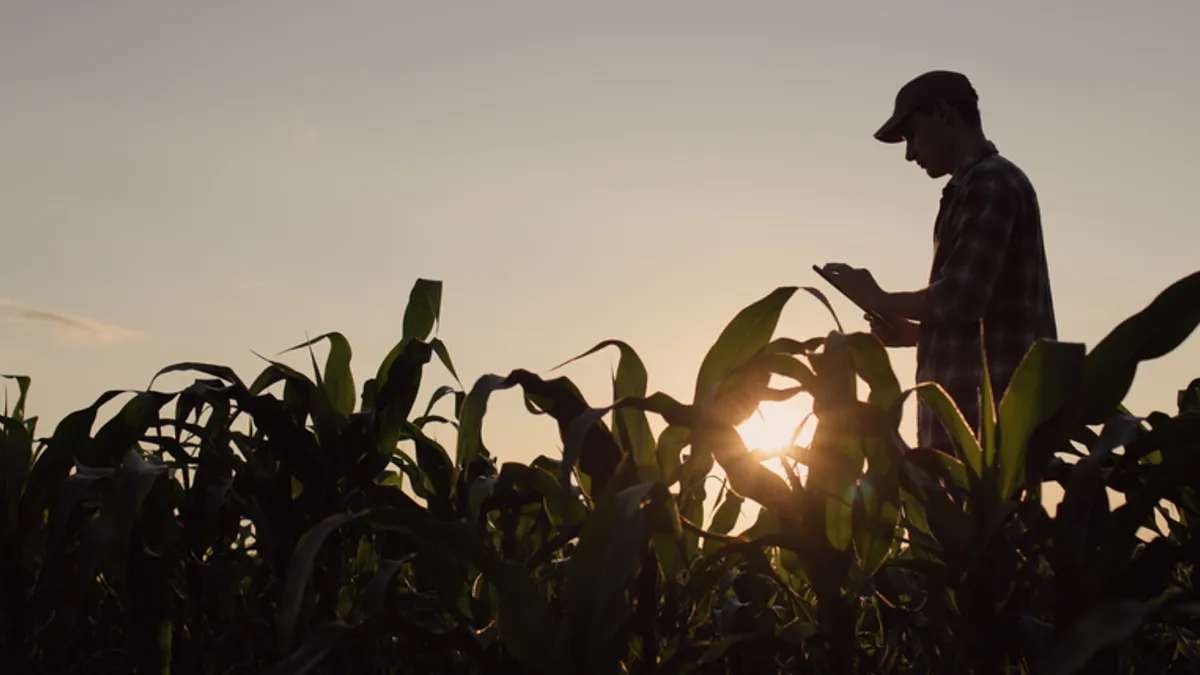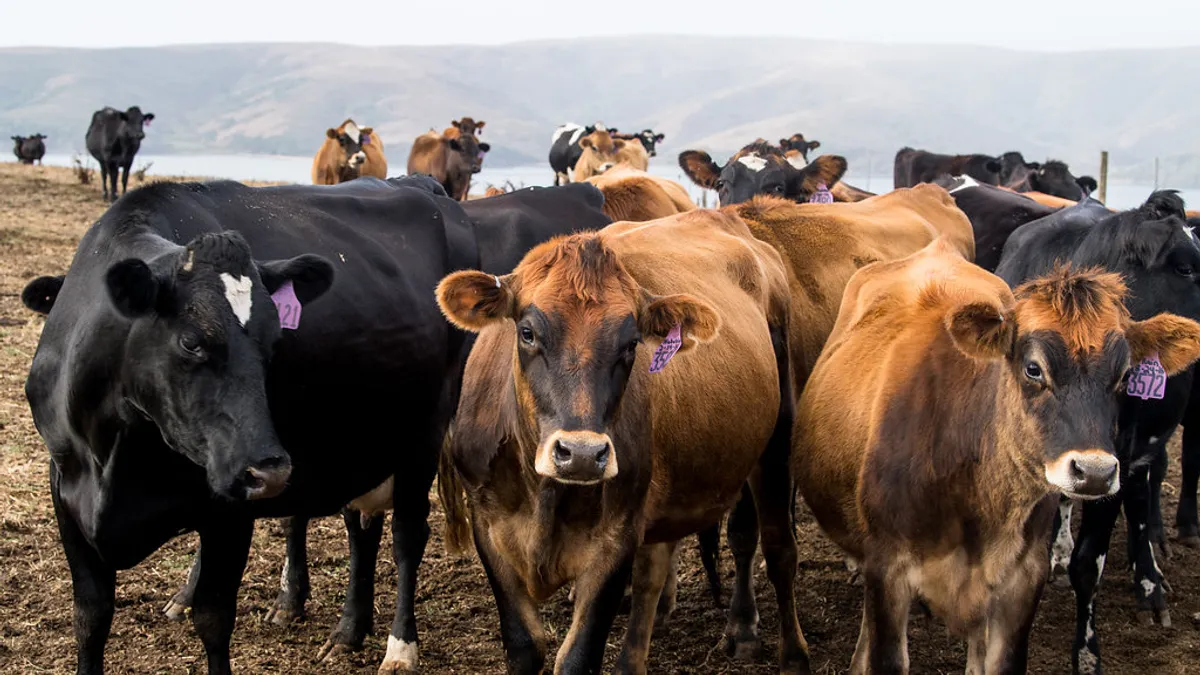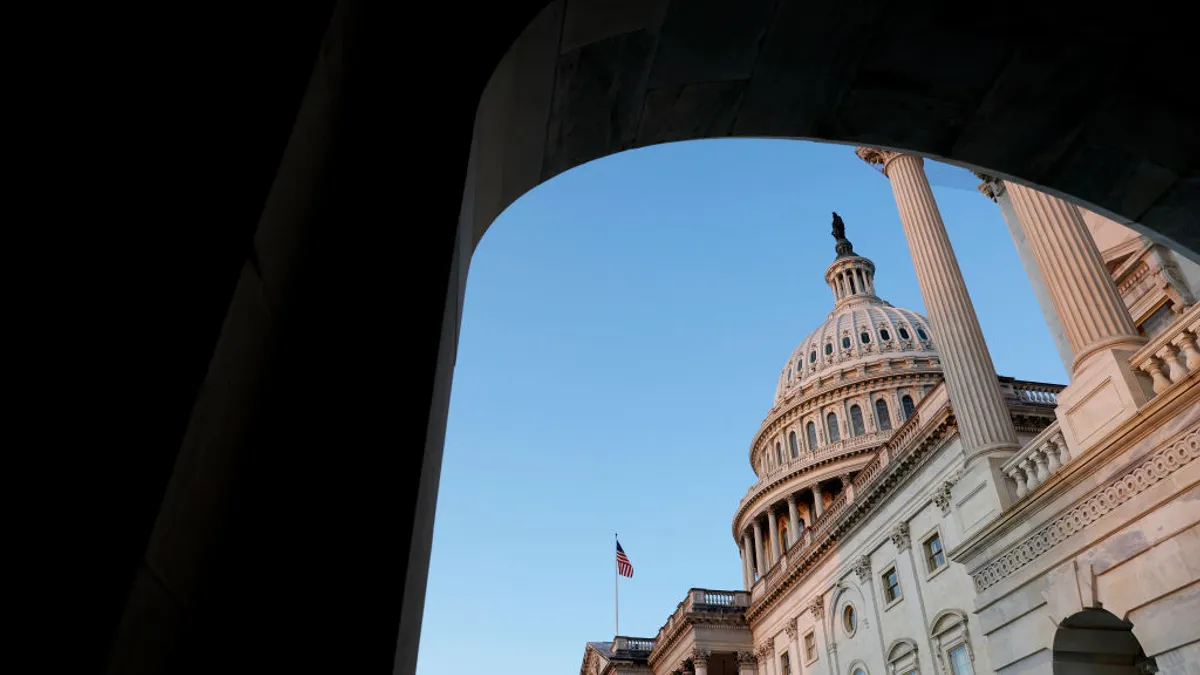A bird flu outbreak in U.S. dairy cows is raising alarm bells for public health officials, who have recently called on the government to ramp up efforts to prevent the virus from spreading to humans and potentially causing another COVID-like pandemic.
Epidemiologist Katelyn Jetelina, a popular science blogger and one of Time 100’s most influential people in health, recently spoke with Agriculture Dive about the rapid, novel development of avian influenza in livestock and how farmers and stakeholders should think about the outbreak in order to be safe.
While the viral emergence has echoes of the recent COVID-19 pandemic, Jetelina, a scientific advisor to the Centers for Disease Control and author of the newsletter Your Local Epidemiologist, said there are several key differences between the two in terms of timeline, transmission and effects on animals and humans.
Here's what she had to say about the virus' risk to farmers, the government's response so far, and whether it's time to start thinking about vaccinating livestock.
Editor’s note: This interview has been edited for clarity and brevity.
AGRICULTURE DIVE: In terms of bird flu transmission, what are the biggest unknowns right now?
KATELYN JETELINA: One big question is how big is the true outbreak? We truly don't know. We're basically flying blind. The second big question is how, where and when is H5N1 mutating?
USDA recently shared a few viral sequences from animal infections. However, data was incomplete. We need to do a whole lot more testing to understand how this virus has changed over time, and therefore predict where it might end up.
Another big unanswered question is wastewater surveillance. We created this wastewater surveillance during the pandemic which was a huge tool in understanding what areas need action. And we are starting to see H5N1 spike in wastewater, but there's a lot we don't know: Is this due to animals (we think so), versus humans? Is this from milk dumping? Is it from animal sewage? We certainly need more data and more visibility into that.
Is this outbreak more widespread than what's been reported?
Oh, yeah, definitely. It's definitely more widespread. And for two reasons. One is that it was found in the milk supply, right? And this was surprising because milk from known infected cows was not going into the market. So this confirms that the cow outbreak is much bigger than previously known.
Second is genomic surveillance. We had a few scientists, citizen scientists walk through what they found analyzing the raw USDA data and what they found was there's an estimated spillover to dairy cows starting in December. So we think it's been spreading under our noses for a while and is bigger than what we're currently reporting right now.

Experts have made it clear that the virus is a low public risk, but what about farmers who interact with poultry and dairy cows every day? How should they be thinking about the virus and what precautions should they take?
So the risk to the average Joe on your corner in the city is very low. But I am more concerned about farmers, workers, emergency responders, really on the front line who are working with livestock every single day that are in direct and close contact.
They should really be protecting themselves right now, especially since we don't know how big this outbreak is. We don't know how effective it’s spreading to humans. Well, yes, we have one confirmed case, but we haven't been doing more systematic or asymptomatic testing.
And so there are a number of precautions that they can take. Unfortunately, I think a lot of people are going to roll their eyes, but one of them is wearing an N95 mask, wearing gloves and really taking those precautions seriously.”
As an epidemiologist who followed COVID-19 closely, how is this outbreak similar or different in terms of government response?
There's a lot of similarities, but there's really important differences too. I mean, some of the similarities that are kind of haunting us, and I think I think that's why a lot of us are so frustrated, is the lack of transparency, data collection and communication, right off the bat.
This is slowly changing with H5N1, but we need to be better at that from day one. And there's a lot of differences too. One example you brought up is vaccines and treatments, right? We're not starting from zero. We have a stockpile of vaccines. We know Tamiflu works. We have some of these tools ready to engage. That was very different from COVID-19.
The other really big difference is that, I hate when people say 'this feels like March 2020,' because it's not an alarm fire emergency like we saw in March 2020 or even January 2020. I would say this is more like October 2019 where we're witnessing a spillover event and we don't know if it's gonna cause a pandemic or not.
So the actions we are asking the public are very different from COVID, but again, the government response could certainly be better, faster.
Do you feel as though the government has been too slow to release data or is not being transparent enough?
I think that's what has been the main frustration is that information from that response has not been easy to find, if it has been able to be found, it's not necessarily complete and not necessarily backed with data, leaving a lot of us to kind of piece together a very fuzzy picture.
I don't think it's malice, but what I do think is that there are just multiple players involved. Right? We have animals, we have humans, we have viruses, and all of these players have their own priorities only to authorities, agility, experience, politics, etc., that is really hindering a coordinated one-stop shop of information or communication.
I will say though, that after a lot of pressure, government agencies have started finally hosting briefings for the media, as well as scientific experts, which I do think is a positive step in the right direction.
And we can't take this long to respond because viruses spread a whole lot faster. And there's just so many practice runs we get before this starts costing lives.
There has been talk about how the U.S. is prepared to distribute vaccines if humans become infected with bird flu. But should we be thinking about vaccinating livestock and poultry?
Yeah, this is such a heated debate right now. Because there are pros, obviously to vaccinating animals. There are negatives though.
For example, it's really tough to know the difference between vaccination and infection and screening. The other thing is that this makes it, if an animal is vaccinated, it's more likely to have asymptomatic spread, right, so we're less likely to find it if there's a signal to be found.
The other very real challenge on the ground is that exporting cows and chickens and livestock is much more difficult if they're vaccinated rather than unvaccinated. There's lots of rules and regulations around that.
What's not clear is what is the line, or that point where we have to start doing something? When is that? And it's not clear from the animal perspective, it’s certainly not from the human perspective.
I think if we start seeing human-to-human transmission, we certainly need to start really ramping up our vaccine manufacturing. I would even argue that if we start seeing this in pigs, I would start getting even more concerned because they’re such a good mixing vessel for viruses.
What would be the concern if the virus moves to pigs?
So pigs are always kind of on our epidemiologists’ mind as somewhere we do not want the flu going. And that is because pigs are known to us as mixing vessels.
They have both human and avian flu receptors, which makes it really easy for viruses to swap mutations. It’s really playing with fire where a virus could figure out how to adapt a lot easier to humans.
We don't think that cows have the same level of risk of viral mutations harming humans. But again, we have so many unknowns, right? We're trying to learn as quickly as we can.



